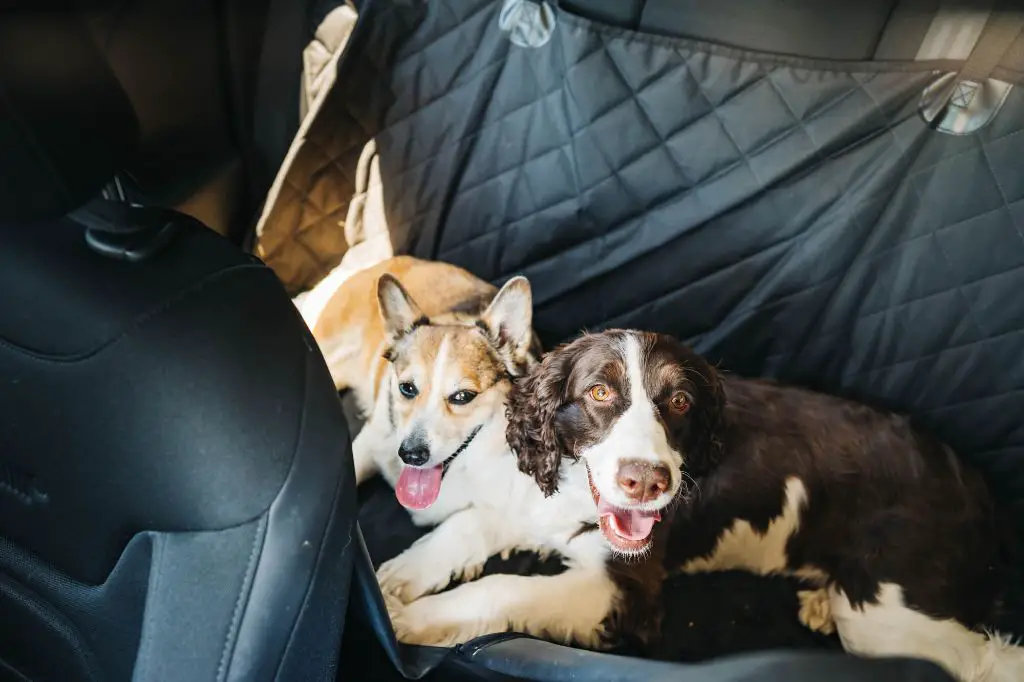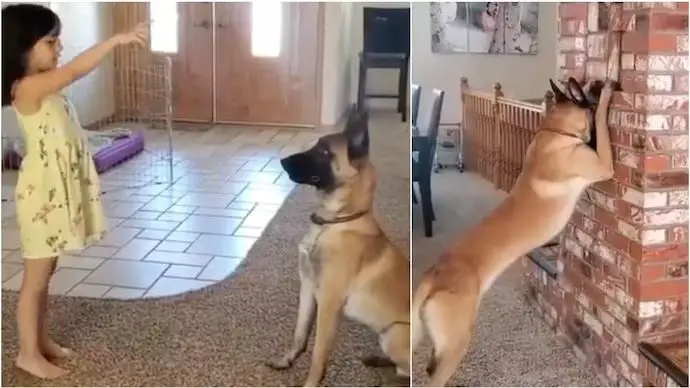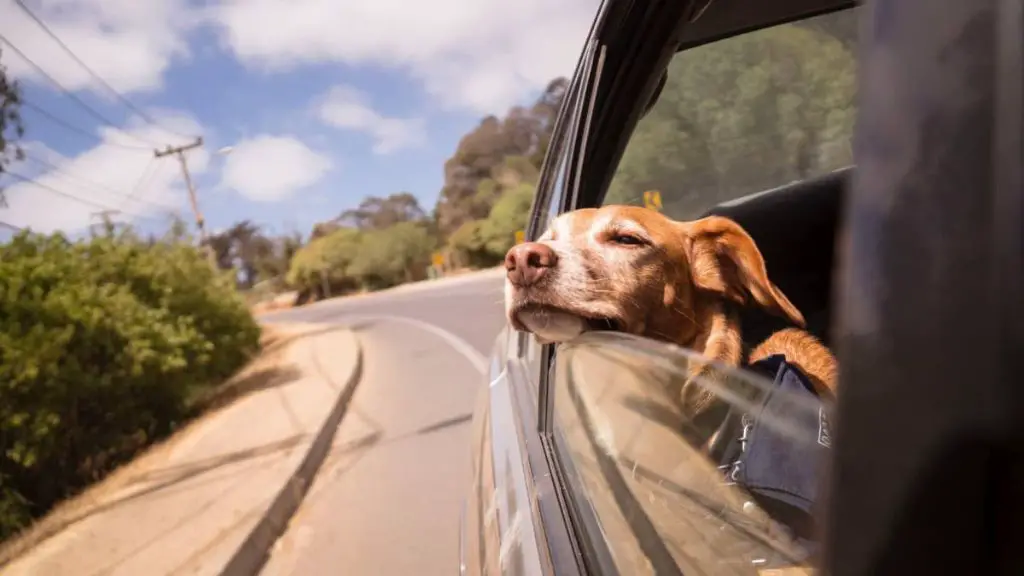Introduction
Taking road trips with dogs can be a fun adventure for both owner and pet. However, unlike humans, dogs have different needs when traveling long distances by car. It’s crucial to stop frequently when driving with dogs to keep them safe, healthy, and comfortable throughout the trip.
This article will provide dog owners with tips on determining when and where to stop when road tripping with pets. We’ll cover how often you should plan stops for potty breaks, exercise, food, water, and preventing car sickness. You’ll also learn how to prepare your dog for these stops and make them as stress-free as possible. With the right stopping schedule and activities, you can make sure your dog enjoys the journey as much as the destination.
Stopping for Potty Breaks
How often you need to stop for potty breaks while driving with your dog depends on factors like their age, size, and health. Puppies and senior dogs will likely need more frequent stops. Smaller dogs have smaller bladders and may only be able to hold it for an hour or two. Larger adult dogs can often last 3-4 hours between stops.
Watch for signs your dog needs a bathroom break, like whining, pacing, circling, sniffing, or leg lifting. Most dogs will give cues when they need to go out. Try to stop every 2-4 hours for adult dogs, and more frequently for puppies or elderly dogs who cannot hold it as long.

Ideal places to stop for potty breaks include grassy areas at rest stops, gas stations, and parks. Avoid having your dog go to the bathroom right next to high traffic areas. Bring paper towels and bags to clean up any mess. Having a routine with set stopping points can help dogs learn to hold it between stops.
Stopping for Exercise
Exercise stops are crucial when driving long distances with your dog. Dogs need regular opportunities to stretch their legs, relieve pent-up energy, and get their heart rate up. Taking exercise breaks every 2-3 hours will make your road trip much more comfortable for your canine companion.
Look for places where your dog can safely walk around, run, play fetch, or go for a short hike during stops. Empty fields, dog parks, hiking trails, beaches, and other open areas are ideal for giving your dog a chance to move. Try to avoid exercising your dog near busy roads or parking lots.
Aim for at least 10-15 minutes of activity during exercise stops. Engage your dog with play and interact with them during this time. The mental stimulation will be just as beneficial as the physical exercise. Your dog will be calmer and better behaved when back in the car after having a chance to work their body and mind.
Stopping for Food & Water
Making regular stops for your dog to eat and drink is extremely important when traveling long distances by car. Dogs can easily become dehydrated or hungry when cooped up for extended periods. How often you need to stop depends on the total duration of your road trip.
For trips under 4 hours, one food/water break is usually sufficient. For longer journeys, aim to stop every 4-6 hours to allow your dog a chance to replenish. Very long drives may require stopping as frequently as every 2-3 hours for small breeds or puppies. Monitoring your dog’s food/water intake and energy levels is the best way to gauge their needs.
When stopping, it’s ideal to let your dog eat and drink outside the car. Bring a collapsible dog bowl and bottled water. Offer small portions of their regular food. Avoid unfamiliar foods or treats that may cause indigestion. If your dog won’t eat/drink, try again at the next stop when they may be less stressed.
Keep water and treats accessible in the car for between-stop hydration. Use a spill-proof bowl and monitor intake to avoid car sickness. For long trips, consider packing a small cooler with portions of their diet to feed at stops. With planning, you can keep your road trip dog fed, hydrated and content!
Stopping to Prevent Car Sickness
Motion sickness in dogs, also known as car sickness, is a common issue when traveling with your furry companion. It occurs when the mixed signals from your dog’s ears (detecting motion) and eyes (seeing a stationary interior) cause confusion. Nausea is triggered as their brain struggles to reconcile the discordant sensory inputs.
The best way to prevent car sickness is taking regular fresh air and stretch breaks. Experts recommend stopping at least every 2-3 hours to let your dog go to the bathroom, walk around, and get some fresh air. Opening the window a few inches can also help equalize the internal cabin pressure and introduce new scents. Avoid feeding your dog right before the trip. Feed smaller meals during travel stops instead.
If your dog shows signs of nausea such as drooling, licking lips, or heavy panting, take a break immediately. Provide water to keep them hydrated. You can also consider giving them ginger, peppermint, or motion sickness medications if recommended by your vet. Stay upbeat and avoid consoling them too much, as this can reinforce the anxious behavior.
With proper precautions, you can minimize car sickness and help your dog stay comfortable on road trips. Planning frequent fresh air breaks lets them relieve stress and maintain their equilibrium while in motion.
Planning Your Stop Schedule
When planning stops on a long road trip with your dog, there are several factors to consider:
Trip duration – For short 1-2 hour trips, you may only need a quick rest stop. Longer trips require more frequent and longer stops every 2-4 hours.
Your dog’s needs – Active dogs will need more exercise stops than seniors or puppies. Adjust stops based on energy level.
Weather conditions – Avoid prolonged stops in extreme heat or cold. More frequent short stops are safer.
Type of road – High traffic and high speed roads are more stressful. Plan more stops if driving these routes.
Time of day – Try to coordinate longer meal and exercise stops during your dog’s normal high activity times.
Here’s a sample stop schedule for a long 12-hour trip:

7 AM – Depart after short bathroom walk
9 AM – 30 min rest stop for breakfast and exercise
12 PM – 1 hour stop at dog park for lunch and playtime
3 PM – 20 min quick break for bladder relief
5 PM – 45 min stop for dinner and walk
8 PM – 30 min end of trip decompression walk
Activities at Stop Locations
When stopping on a road trip with your dog, it’s important to make the most of each break to provide enrichment and exercise. The best places to stop are dog-friendly rest areas, parks, trails, and open grassy areas. At each stop, engage your dog with the following activities:
– Play fetch or frisbee. Bring your dog’s favorite toy and play a quick game of fetch to get their legs moving.
– Take a short walk. Explore nearby trails or walk around an open field to give your dog a change of scenery.
– Bring puzzle toys. Pack interactive toys like Kongs stuffed with treats or snuffle mats to occupy your dog during downtime.
– Offer chews. Long-lasting and distracting chews will keep your dog happy in the car. Try bully sticks, Himalayan chews, or frozen Kongs.
– Hide treats. Make your dog “hunt” for treats around grassy areas and under bushes for mental stimulation.
– Play hiding games. Take turns hiding behind trees and cars, then reward your dog when they find you.

– Offer praise and petting. Your affection can go a long way during a stressful trip.
Planning brief but enriching activities at each stop will give your dog physical and mental exercise to stay happy on the road.
Preparing Your Dog for Stops
Getting your dog ready for frequent stops while driving will help make the journey more comfortable and enjoyable for both of you. Here are some tips:
Start by taking your dog on short car rides to get them used to traveling in a vehicle. Go on drives around the neighborhood or to fun locations like a park. Reward calm behavior with treats and praise.
Bring along toys, blankets, treats, a water bowl, poop bags, a leash, and any medications your dog may need. Having familiar items will help them feel more at ease.
Don’t feed your dog a large meal right before a long drive, as this may lead to nausea or the need to poop frequently. Feed smaller meals during the journey instead.
Consider using pheromone sprays and anxiety wraps to ease anxiousness. You can also talk soothingly and play calming music.
Make sure your dog is microchipped and wearing ID tags in case they ever slip away at a stop. Pack a recent photo of them as well.
By getting your dog accustomed to car travel and bringing along provisions to meet their needs, you can make frequent stops less stressful for your canine companion.
Monitoring Your Dog’s Comfort
When driving with your dog, it’s important to pay attention to signs they may be getting uncomfortable and need you to stop. Look for behaviors like panting, pacing, whining, drooling, shaking, or trying to climb into the front seat. If your dog is prone to car sickness, they may also start yawning, licking their lips, or breathing heavily. Signs of anxiety include flattened ears, dilated pupils, and lip licking.
If you notice any body language indicating discomfort, pull over as soon as it’s safe to do so. For anxious or carsick dogs, you may need to stop more frequently like every 30-60 minutes. Allow your dog a chance to relieve themselves, walk around for a few minutes, and get fresh air or a drink of water.
Carry special toys or chews reserved just for rides to occupy your dog at stops. Keep the car cool and make sure your pet isn’t sitting in direct sunlight. Consider trying anti-anxiety supplements or medication prescribed by your vet if your dog has extreme travel stress.
Watching for signals and being responsive shows your dog you care about their wellbeing. With time and positive experiences, many dogs can be conditioned to better tolerate car travel when their needs are met along the way.
Conclusion
Taking frequent breaks is essential when driving long distances with your dog. Stopping allows your dog to relieve themselves, stretch their legs, stay hydrated, and avoid car sickness. The general recommendation is to stop at least every 2-3 hours. Plan your route in advance and identify ideal rest stop locations. Bring food, water, leashes, waste bags, and toys to keep your dog comfortable and entertained during pit stops. Monitor your dog for signs of distress. With proper preparation and attentiveness to your dog’s needs, your road trip can be an enjoyable experience for both of you.
In summary, frequent stops are crucial on road trips with dogs. Setting aside time to let your dog potty, exercise, eat and drink will keep them healthy, happy, and prevent accidents or illness. Don’t ignore warning signs of carsickness. Be ready to pull over if necessary. Planning stops in advance, bringing supplies, and staying alert to your dog’s comfort are key. With patience and care, you and your furry friend can have memorable travels together.
